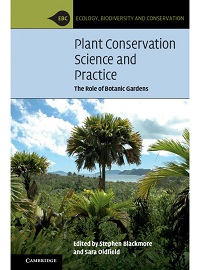
Plant Conservation Science and Practice: The Role of Botanic Gardens is an in-depth study of botanic gardens, arboreta, seed banks, and similar institutions and the responsibility they have in the conservation of plants on a global scale. Editors Stephen Blackmore and Sara Oldfield have included the input of an impressive list of botanists, primarily at botanic gardens, to observe what is being done, and to consider improvements, especially through international cooperation.
Education and demonstration is an important function of public gardens in the promotion of in situ conservation. The know-how that researchers and staff of these gardens have developed in ecology, horticulture, and systematics also contribute to these efforts.
Ex situ conservation is supported by plant collections – many plants exist only in cultivated settings – and by seed banks, that both preserve and make seeds available for research. This research includes searching for solutions to food and fuel security. Demonstrating that these solutions do not come at the loss of biodiversity is another important message that botanic gardens teach.
In conclusion, the editors look to botanic gardens to continue their public outreach and education, but they expect more. They admonish these institutions to use their special expertise to “take their place as key agents for undoing much of the damage we have inflicted on our planet.”
Published in the November 2017 Leaflet for Scholars Volume 4, Issue 11